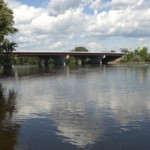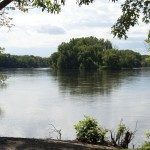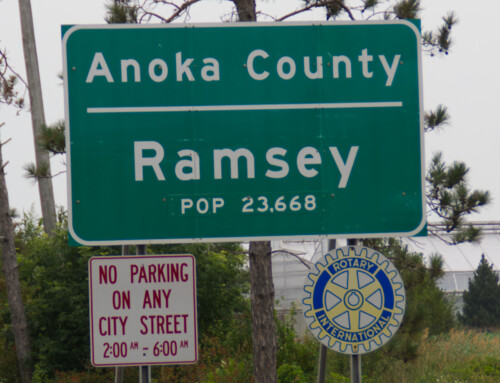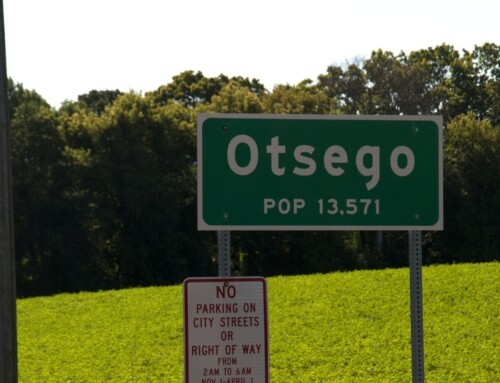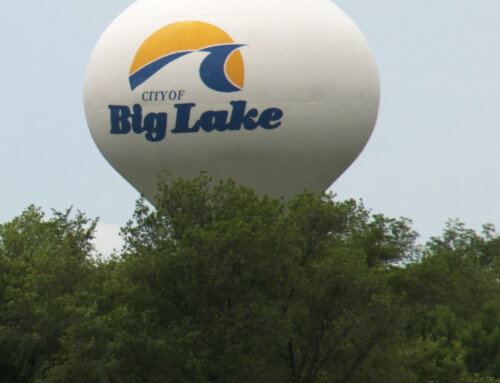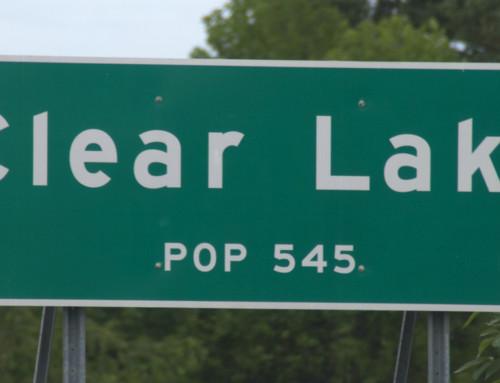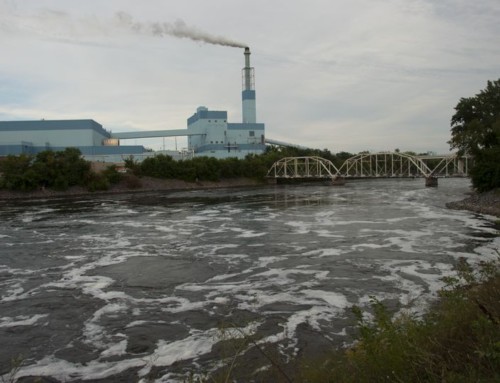Visitor Information
Direct your questions to the Twin Cities North Chamber of Commerce (763.571.9781).
History
Vermont native John Banfil moved here in 1847 and would eventually serve as the first postmaster for a town he would plat in 1851 called Manomin (the Ojibwe word for wild rice). Before all that, though, he built a tavern and sawmill along the Red River Ox Cart Trail. When the Government Road was surveyed by Lieutenant Simpson, Banfill suggested using the top of his milldam to cross a creek instead of building a new bridge. When that didn’t happen, Banfill filed a lawsuit for $500 in damages. Simpson countersued, claiming Banfill was trying to blackmail him; Banfil lost.
Henry Mower Rice, the fur trader turned politician who helped realize statehood for Minnesota, bought land in Fridley in 1849 and put up a nice house but his new wife apparently didn’t like the area; they moved out the day after she arrived.
Abram McCormick Fridley a native of New York, bought Rice’s land and mansion and set out to leave his mark on the community. (That grand 16-room mansion was moved to northeast Minneapolis in 1950.) In 1851 President Millard Fillmore appointed Fridley as Indian agent for the Ho Chunk who had been relocated to nearby Long Prairie. Fridley thought the area was a poor choice—too swampy and full of insects—but he didn’t get much of a chance to effect the decision as he lost his job just two years later when the voters replaced President Fillmore with Franklin Pierce. Fridley moved to St. Paul and won election as sheriff of Ramsey County; during his tenure, he carried out the state’s first legal execution, hanging a Native American man convicted of murder.
He moved to Manomin and represented the area in the Territorial legislature in 1855 and was still politically connected when his home township became a county in 1857, a very small county at that. It’s not clear if this was a mistake or if someone had it out for Fridley; he clearly favored the latter interpretation:
The bill passed by both houses embraced, in addition to the territory comprising the present town of Fridley, the town of Mound View, both taken from Ramsey county; but by skullduggery, presumably by a Ramsey county politician, Mound View was omitted in the enrollment of the bill presented to the Governor (an uncle of mine), who approved it without discovering the emasculation. –From a letter to Judge Edwin A. Jaggard; April 18, 1899.
Fridley the man, tried to make a go of it, serving as the chair of the board for Manomin County, a jurisdiction that folks took to calling “Major Fridley’s Kingdom.” The small county could never raise enough money to sustain basic services, though, so it was merged with Anoka County in 1869, an action that required approving an amendment to the state constitution.
Abram Fridley, unburdened by trying to manage a small county, went on to serve two terms in the state legislature. During his second term in 1879, the legislature passed a bill changing the name of the township where Fridley lived from Manomin to Fridley; the bill was sponsored by Abram Fridley himself.
Abram was a man of many accomplishments. In addition to serving in the state legislature, he served a four-year term as regent for the University of Minnesota, worked as a land grant agent for the St. Paul and Pacific Railroad, which later became part of the Great Northern Railroad, which probably explains how Abram got to be friends with rail magnate James J. Hill.
During the 1870s Fridley the village attracted a few new businesses (a starch plant and a couple of mills) but they failed and Fridley was nearly a ghost town by the 1890s. Farming picked up, many of them dairy farms, but mostly the area stayed quiet into the middle of the 20th century, when, in 1949, residents voted to incorporate the whole township as a village. A lawsuit delayed implementation for two years, then in 1957 the village incorporated as a city.
The Fridley story took a tragic turn in the 20th century, at least for the Fridley family. Granddaughter Mary (David Fridley’s daughter) was murdered by her husband, Fred Price, on November 28, 1914. Fred wanted a bigger share of the Fridley fortune (she had recently received $10,000 in bonds from her father). Mary died after falling from a cliff along the Mississippi River in St. Paul. Fred claimed she fell while out walking her dog (a spaniel named Chum) and the police believed him, at first, anyway. Not content to just get away with murder, though, Fred sued St. Paul for not having a guard rail at the spot where she fell. Mary’s father, David, grew suspicious and hired a private investigator who soon cracked the case, probably by encouraging Fred’s accomplice, Charles Etchison, to confess. Fred was eventually tried and convicted in January 1916; he died in Stillwater prison in 1930. The trial opened the door on many of Fred’s secrets, like his criminal past, a mistress, and the little detail that he never officially divorced his first wife.
Exploring the Area
The Banfill-Locke Center for the Arts (6666 East River Road; 763.574.1850) serves as a hub for local and regional artists in the northeast Twin Cities. The center, located in the Greek Revival house originally built by John Banfill in 1847, has a gallery that hosts rotating exhibits.
The Mississippi National River and Recreation (651.290.4160) runs for 72 miles through the Twin Cities. While the National Park Service owns very little land along the corridor, it has many programs to help connect people to the river. Visit their website for a complete listing of places to enjoy the river.
Parks Along the Mississippi River
- Riverview Heights Park (487 79th Ave.)
- Manomin County Park (6666 East River Rd.); includes Banfill Locke Center for the Arts
- Island of Peace Park (200 Charles St.)
- Anoka County Riverfront Regional Park (5100 East River Rd.); includes Reidel Farm Estate
Entertainment and Events
Farmers Market
Fridley hosts a farmers market in summer and fall on Saturday mornings (8a-noon) at the Fridley Community Center (6085 7th St. NE).
Festivals
The annual civic celebration is Fridley ’49er Days. Events take place in mid-June and include a parade, fireworks, and a local history tour.
**Fridley and the Twin Cities are covered in Road Tripping Along the Great River Road, Vol. 1. Click the link above for more. Disclosure: This website may be compensated for linking to other sites or for sales of products we link to.
Getting There
If you don’t feel like driving to these parts, the Northstar Line commuter railroad has a station at Fridley; the line begins in downtown Minneapolis (at the Target Field Station) and ends at Big Lake.
Where to Go Next
See the Twin Cities Overview for tips on festivals, getting around, and more.
Continuing downriver? Check out the Minneapolis guide.
Continuing upriver? Check out Coon Rapids.
Community-supported writing
If you like the content at the Mississippi Valley Traveler, please consider showing your support by making a one-time contribution or by subscribing through Patreon. Book sales don’t fully cover my costs, and I don’t have deep corporate pockets bankrolling my work. I’m a freelance writer bringing you stories about life along the Mississippi River. I need your help to keep this going. Every dollar you contribute makes it possible for me to continue sharing stories about America’s Greatest River!
©Dean Klinkenberg, 2013,2017
